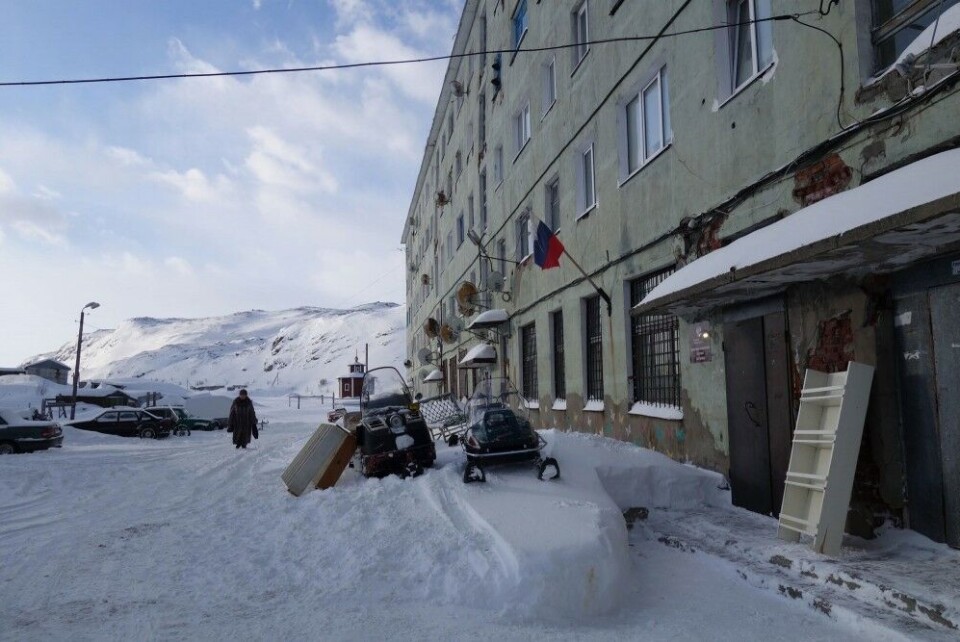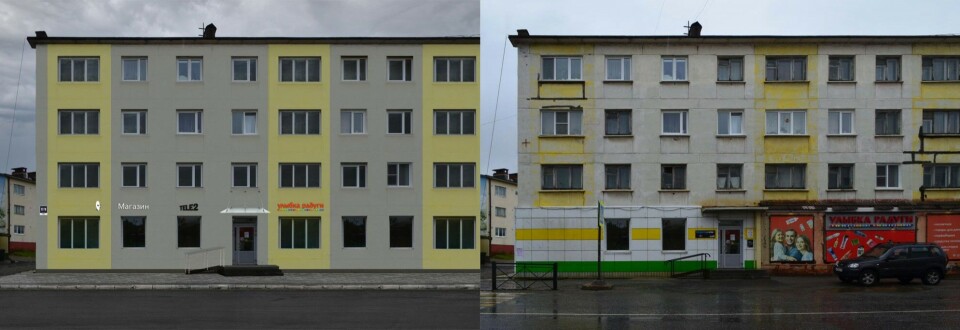
Unhappy with shabby towns, Russian Arctic developers present a beautification plan
Plenty of paint and cement will be needed as Russian bureaucrats introduce an "Arctic standard" and "design code" for far northern urban space.
Many of the far northern towns and settlements that were built in the Soviet period have over the last decades experienced massive out-migration, economic decline and degradation of local infrastructure.
Across the Arctic, towns that previously housed several thousand people are left in a shambles. Some are fully abandoned and stand as symbols of failed policy.
But several of the far northern settlements could now ultimately face revival as Moscow is making the Arctic a priority region. New regional infrastructure and industrial projects are on the table and developers are ready to invest billions.

In a bid to accommodate local living, the federal government now says it intends to make the Arctic towns more attractive.
Recently, the country’s Ministry of the Far East and Arctic set up an expert council with 90 specialists from across the region that are to develop an “Arctic standard” for towns in the region.
The new standard is to facilitate better social and economic living conditions in the region, the country’s Arctic Commission informs. Among priorities is the upgrade of public space and housing quarters and backyards.
Shortly later, a so-called “design code” for the Arctic was presented. In a 417 page document, bureaucrats from the Ministry of the Far East and Arctic together with colleagues from the Ministry of Construction outline how they want city streets in the region to look like.
The document in big detail describes the way local towns centers are to be painted and how shop signs, commercials and information tables should be designed.
According to the officials, most of the settlements in the region suffer from an overload of commercials, failed color combinations and bad-quality housing facades. In addition, town signs are inefficient and street lighting needs to be improved.
Among examples used in the document are towns in the Kola Peninsula, including the town of Nikel. Pictures from the small town located along the border to Finland and Norway show how local shops should shape up painting and remove all superfluous signs and commercials.

According to the ministry, this should be the standard for all towns and settlements across the Arctic.
It remains to be seen whether Moscow’s major Arctic facelift will be applied in the region. Most of the local towns are in a dire economic situation and urban development is beyond the capacity of municipal budgets.
The town of Nikel is itself experiencing a serious crisis following Nornickel’s closure of the local smelter. Despite a major local development program, only few projects are being implemented and the town is in serious danger of becoming a “ghost town.”
Andrei Chibis, the Governor of Murmansk region, himself comes from a leading post in the federal Ministry of Construction and has brought with him a bouquet of former colleagues and advisers to his regional cabinet. Chibis has made “Living in the North” (Na Severe Zhit’) his main slogan and introduced a series of projects that promote living conditions in the north.
However, none of the projects appear to have had much effect on local demography. The population of Murmansk Oblast, like practically all other parts of the Russian Arctic, continues to shrink at a dramatic pace.
As a matter of fact, the population in the Kola Peninsula is now declining at a quicker pace than in the past decade. Figures from the regional branch of statistics service Rosstat show that Murmansk at the start of 2021 had a total of 732,864 inhabitants. That is a more than 1,1 percent drop compared with the same time in 2020.
In the late 1980s, there were more than 1,2 million people living in the Kola Peninsula.

















